Jimny SRS details: airbags, seatbelt pretensioners
One of the big changes brought about with the generation 4 Jimny is the addition of a number of supplemental restraint system (SRS) features. While some (most?) gen3 Jimnys had one or two airbags, gen4 Jimnys can have up to 10 and also feature seatbelt pretensioner devices. There’s always some questions related to this, even if indirectly (e.g. ‘what seat covers should I get’) so I wanted to try to lay out some facts.
Note that some markets get fewer airbags than others. I don’t really want to go into these differences
Sections
- SRS features
- Common questions
- ‘I want to get seat covers, what do I need to think about?’
- ‘I want some roof height storage’
- ‘I want to fit a luggage divider’
- ‘I’m removing my rear seats, what do I do about the seatbelts?’
- ‘I’m fiddling with something related to the airbags, what should I think about first?’
- ‘I’m installing a dash mat, do I have to worry about airbags?’
- ‘I want to install different seats’
SRS features
There are two main supplementary restraint system (SRS) components in the generation 4 Jimnys: airbags, and active seatbelt pretensioners.
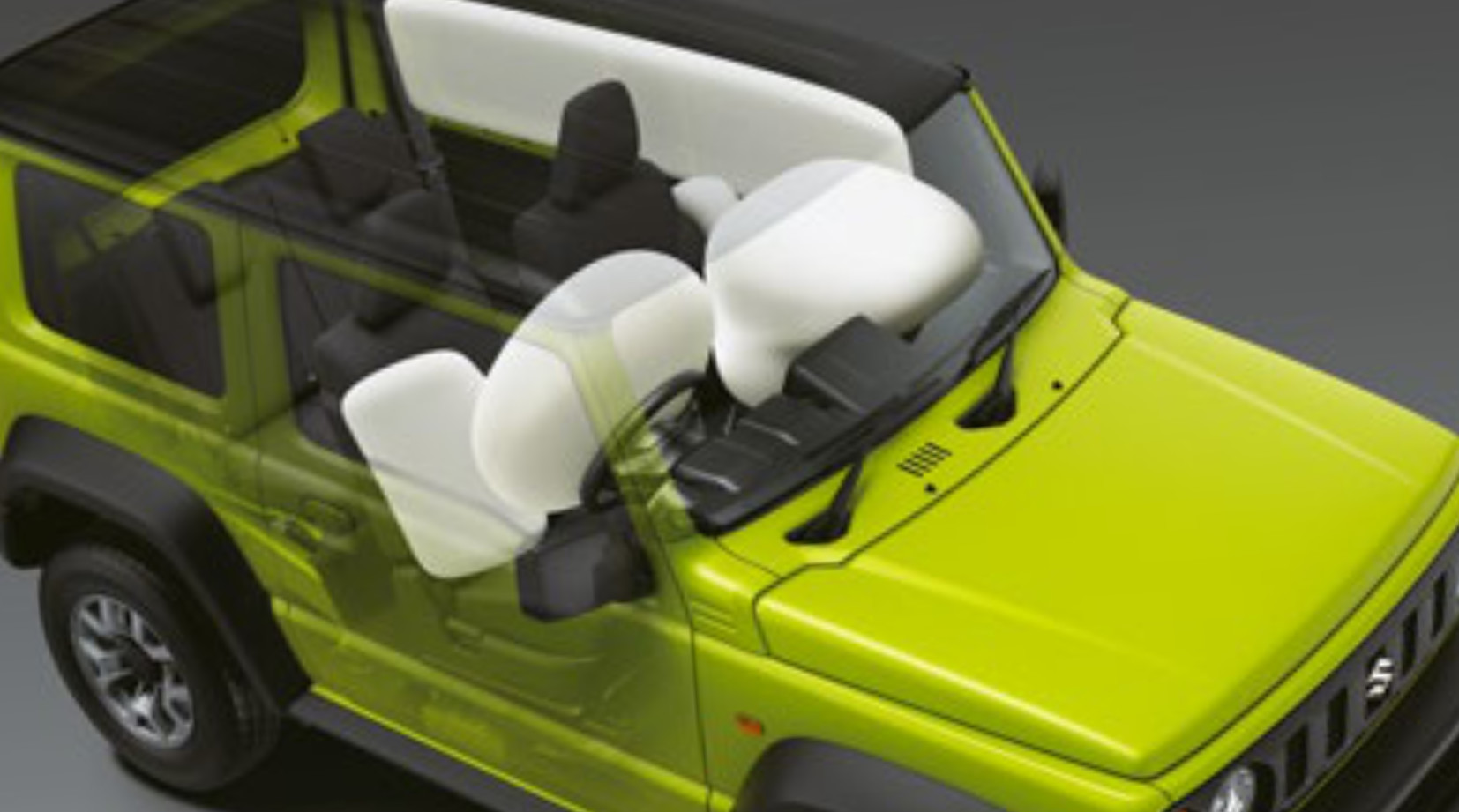
You can get a good overview of just how many airbags there are and what they protect from the ANCAP test results.
The seatbelt pretensioners are harder to image in use; their function is to provide tension on the belt if an accident is detected, holding the driver and any passengers more in place. The seat belts also have a limiter function so they won’t hold you too tight, either.
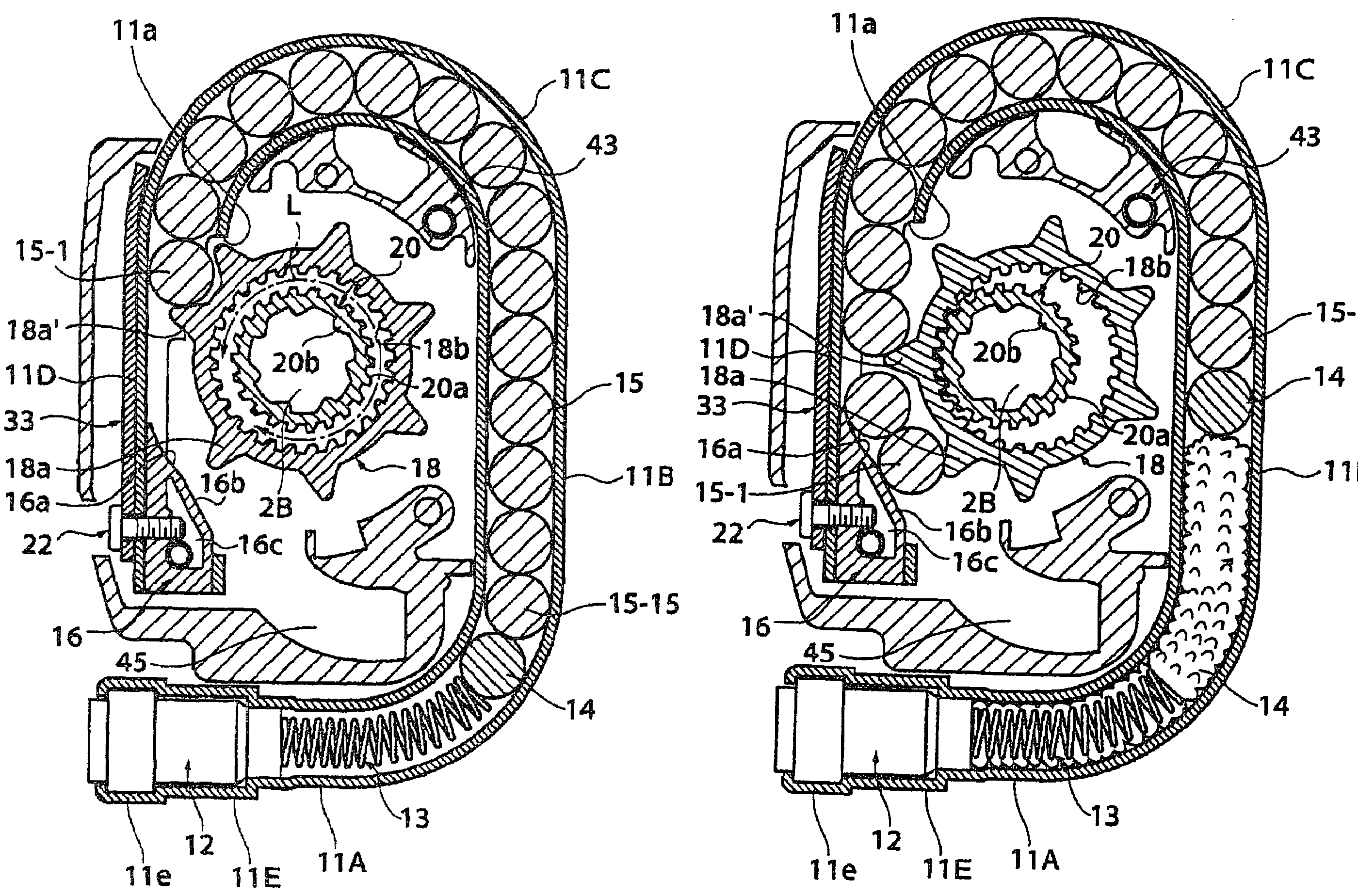
Below I’ll go into a bit more detail about the Jimny’s SRS arrangement. Note that this syste,, like many cars, deploy mostly from force sensors rather than a simple impact switch and there’s a lot of smarts that go into the deployment timing that I’m not privvy to.
Seat airbags
A primary component of the Jimny’s side impact protection for drivers is the provision of airbags inside the front seats themselves. These deploy from the outside bolster of each front seat as needed (generally from side impacts).
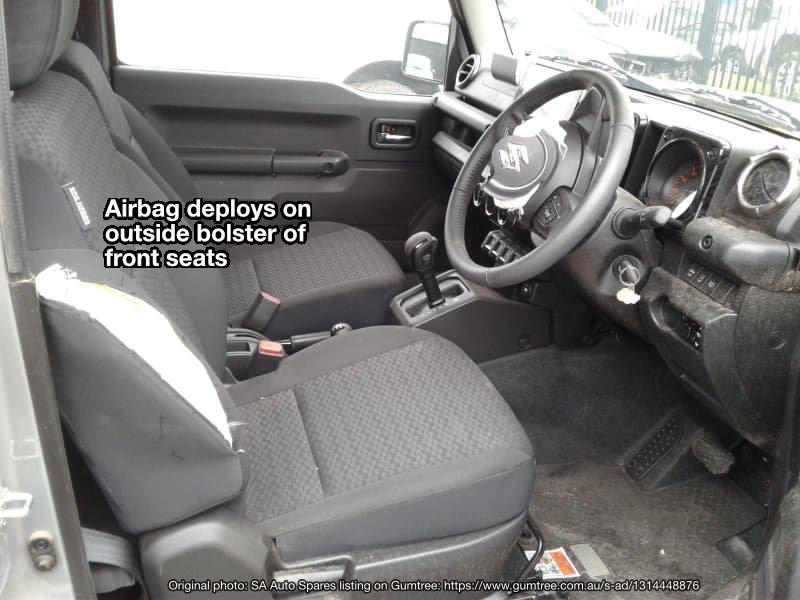
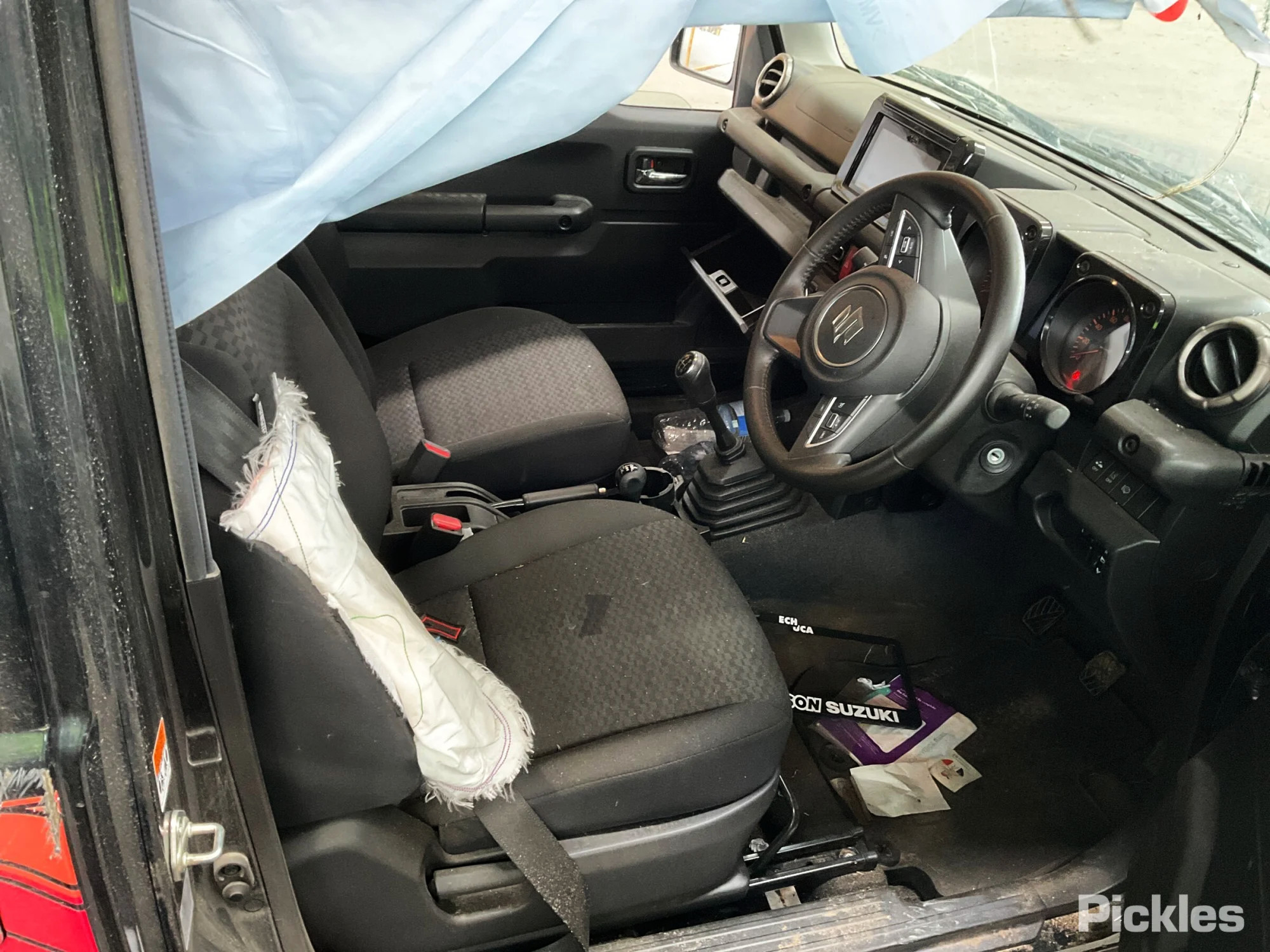
There are some considerations around this seam that opens up when the airbag deploys if you are going to fit seat covers to your car. Other than that not really any considerations other than if you’re going to remove the seats for interior work, or, you want to look at changing seats.
Main driver and passenger airbags
These are the obvious airbags to most people (and what they’ve come to expect from a car). These airbags deploy from the centre of the steering wheel for the driver and from the large part of the dashboard.
Here’s a quick before and after I found via the ol’ ‘gram.
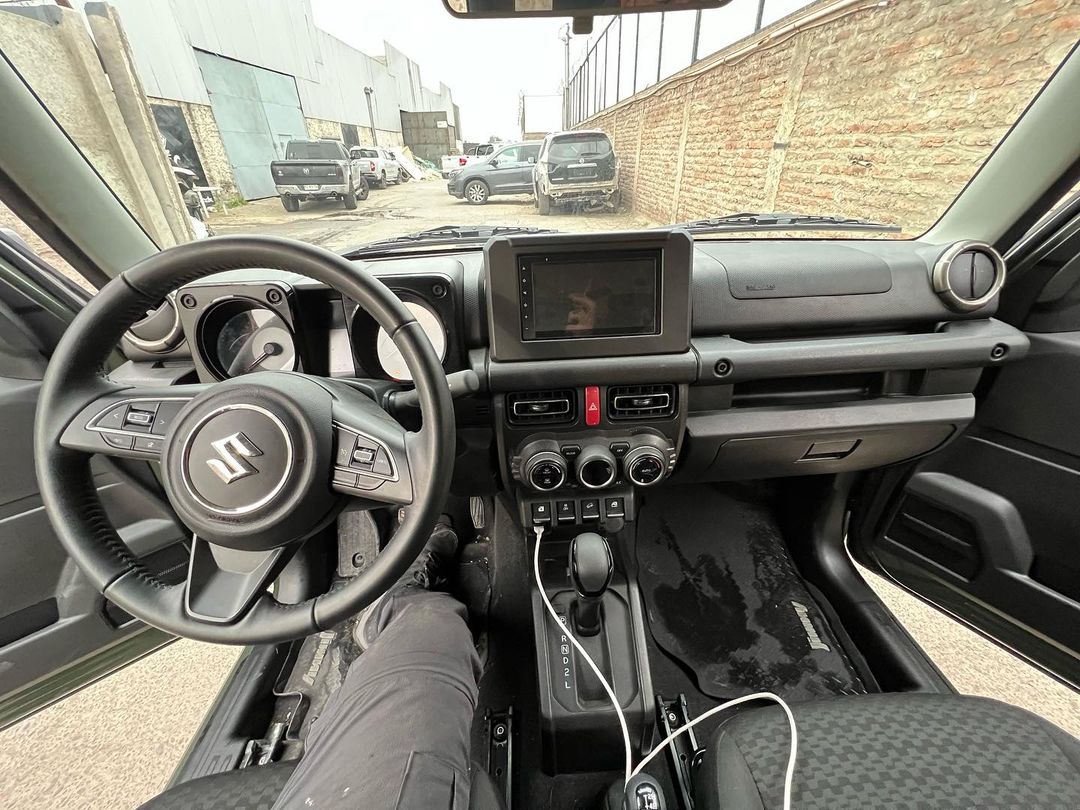
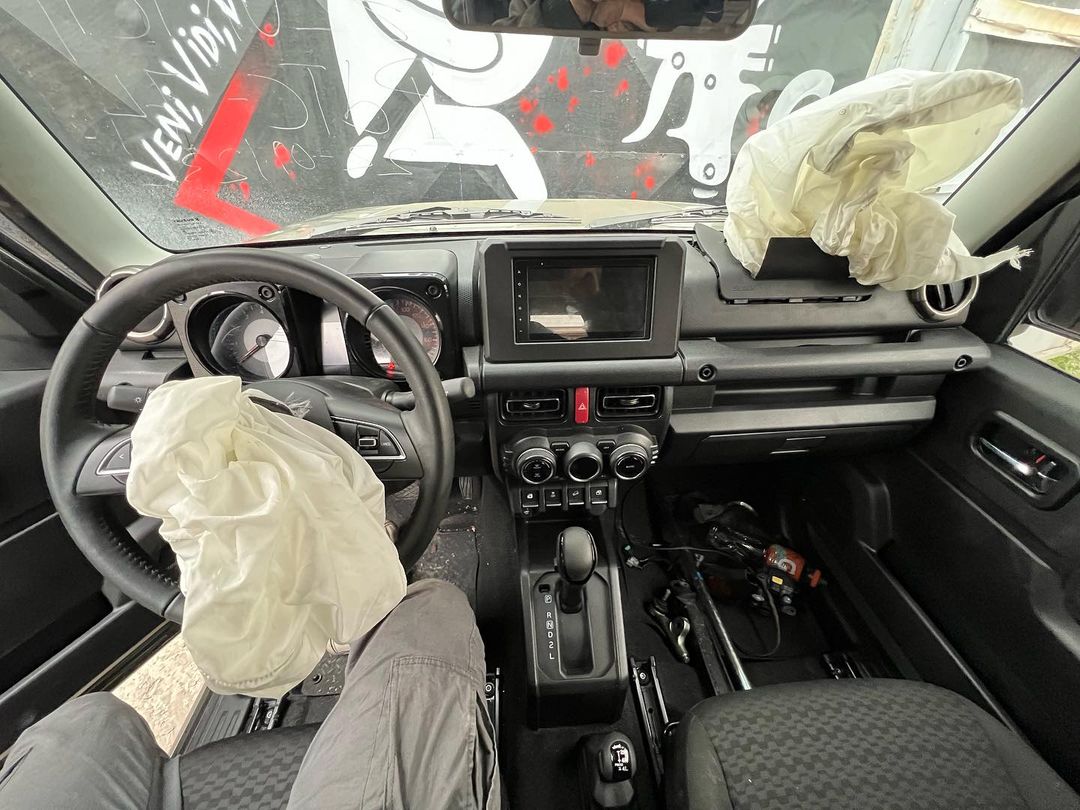
Interestingly, the steering wheel airbag comes out in a way where the Suzuki logo is not disturbed but instead breaks the centre cap in a sort of ⅔ / ⅓ sort of a way.
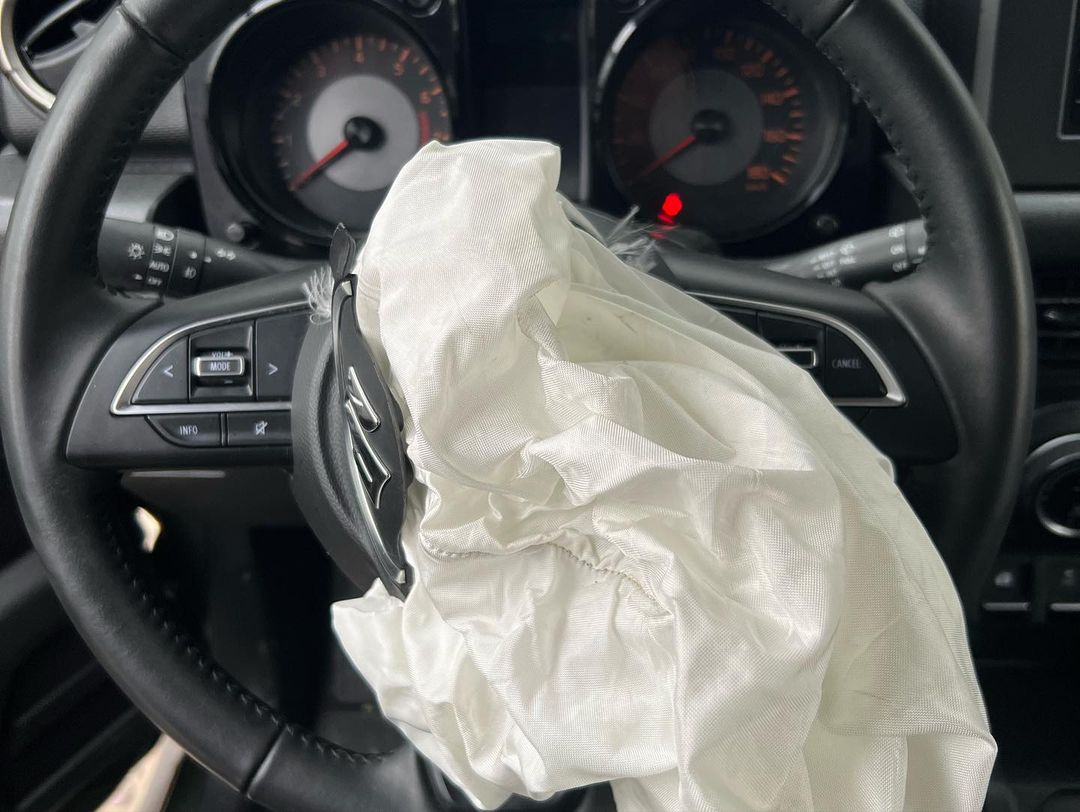
The Euro NCAP/ANCAP testing video really gives you an idea of how they deploy.
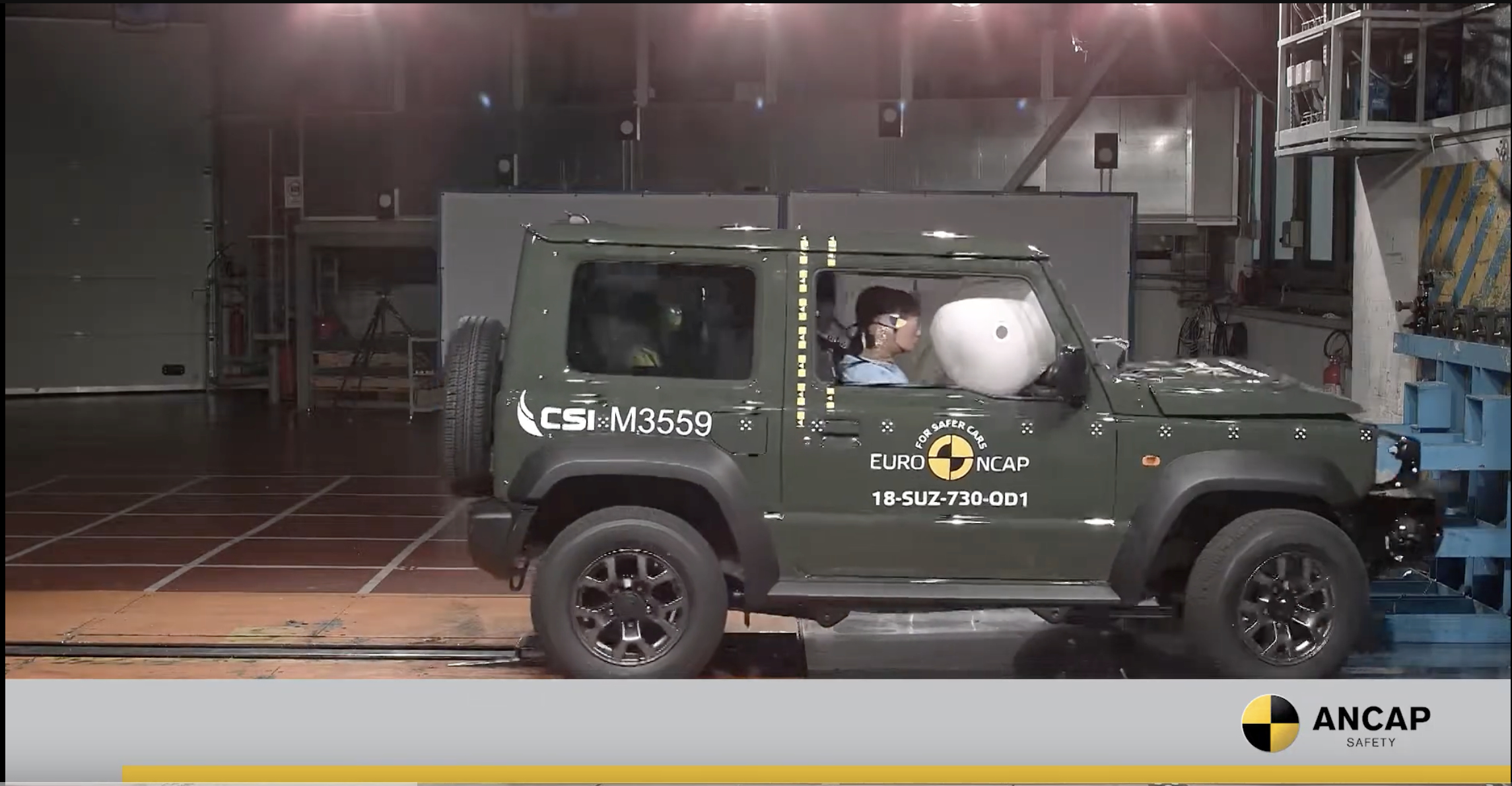
You can see how far out they deploy. Looking at the video you can also get a sense of how ‘wide’ they deploy and how that might interract with things you fit to the dashboard, especially to the 3 attachment M8 holes in the dashboard.
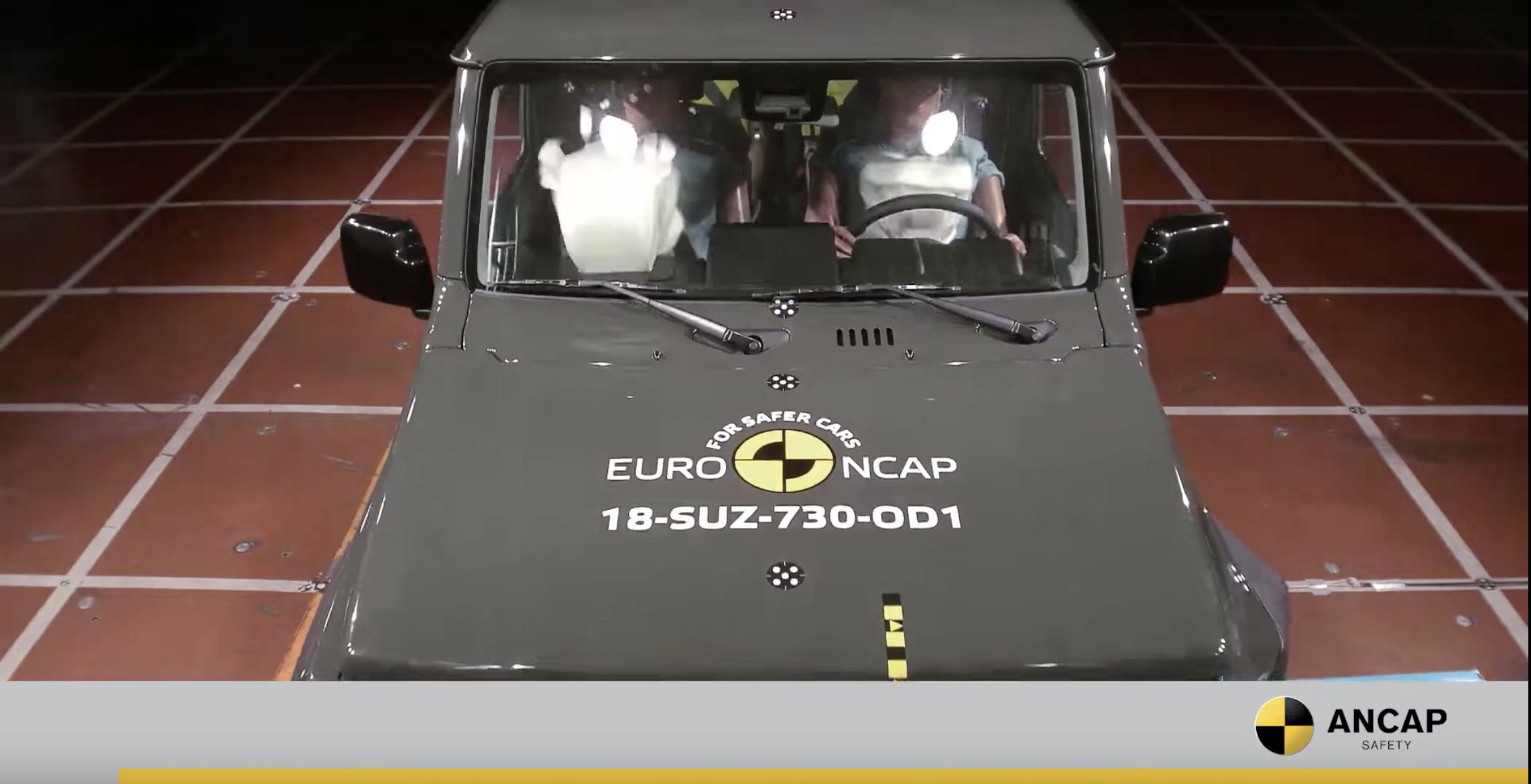
This previous picture shows them when they’re fully ‘out’ but not fully inflated, when they get much wider.
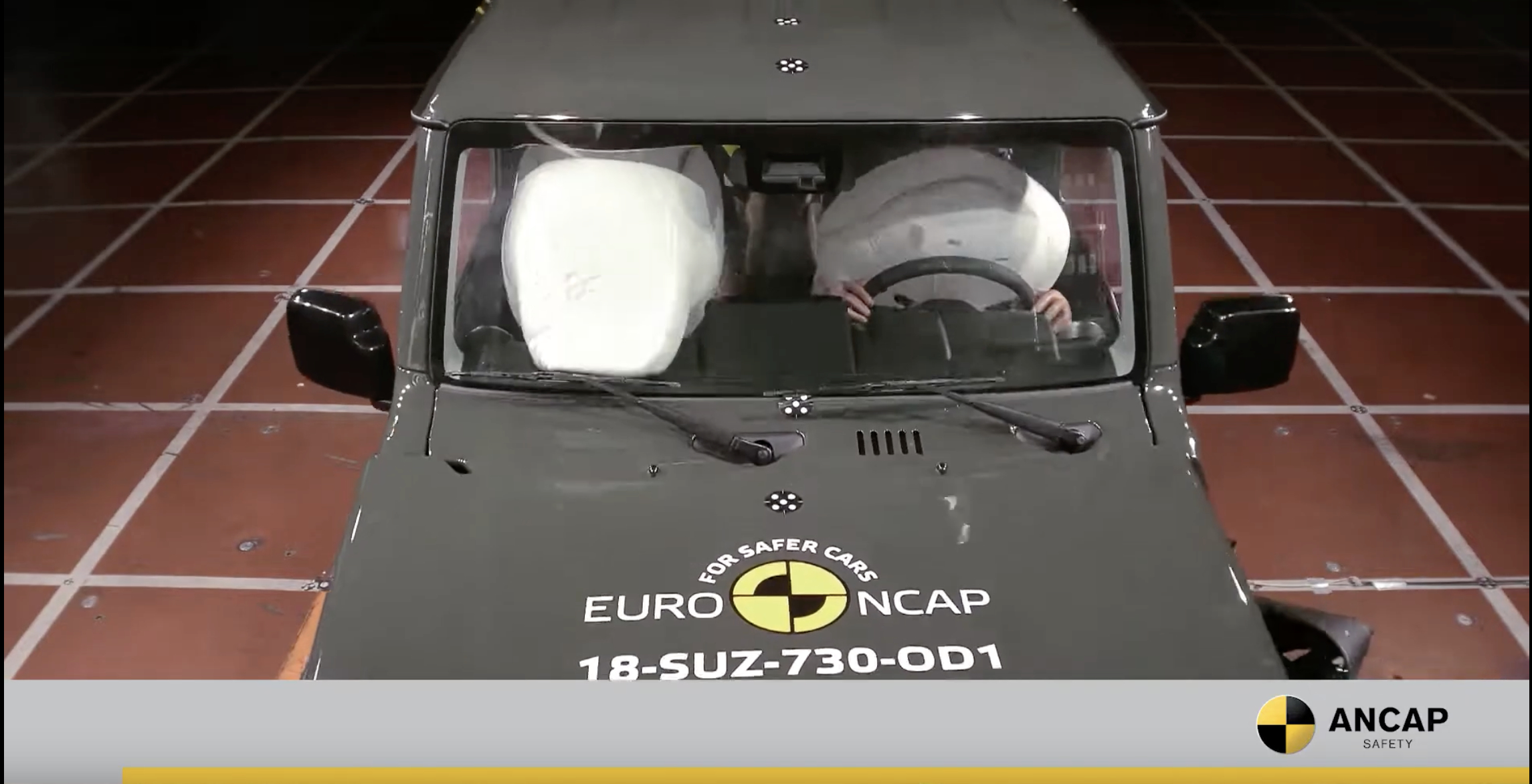
As you can see, they get quite a bit wider though neither driver or passenger airbag would interract with the attachment points under the air vents. The one on the other side of the passengers side grab handle might require some thinking (discussed below).
Not much else to say about these, really! Do be careful of the steering wheel centre airbag if you’re pulling the steering wheel off, and, be considerate of the air bag for the passenger if you fit a dash mat or dashboard accessories.
Curtain airbags
There are a couple of additional airbags in the car, being curtain airbags that deploy from the ceiling. They run the full length of the car, from the front to the back, and deploy even if there’s no-one in a rear seat on the side they need to deploy on. From the top image in this article you can see the big white curtain running down the entire side covering the windows front and back: this is the curtain airbag for that said, and there is one per side of the car.
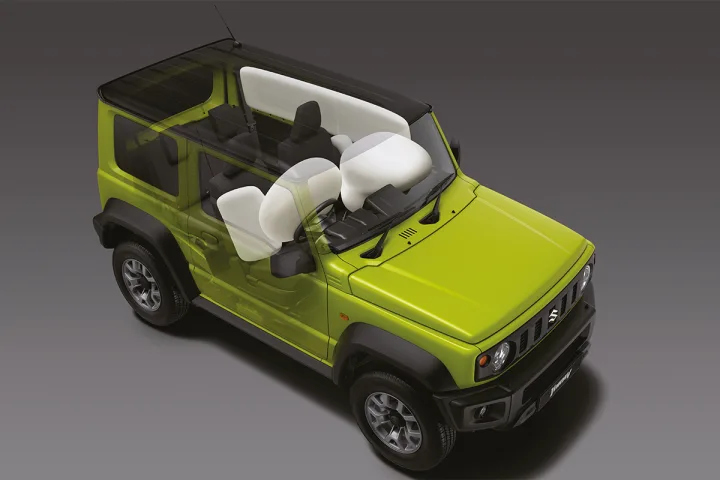
These are not fitted to all Jimnys, e.g. light commercial vehicle versions in Europe and some markets (such as South Africa) don’t seem to get them. Safest option is to assume that they exist, and in Australia they definitely do on all specification Jimnys.
They are apparent if you drop the headlining down as a rolled up airbag; note that the deployment explosive is at the back of the car rather than the front.

There is some structure behind the actual inflating part of the airbag attached to the car to keep it in place; this structure continues down to the A-pillar but note it only deploys down from the headliner level. Anything between the side of the car and the headliner that isn’t at an angle will hinder its deployment, and the deployment is front and back simultaneously. The inflators hide up by the rear grab handle mounts.
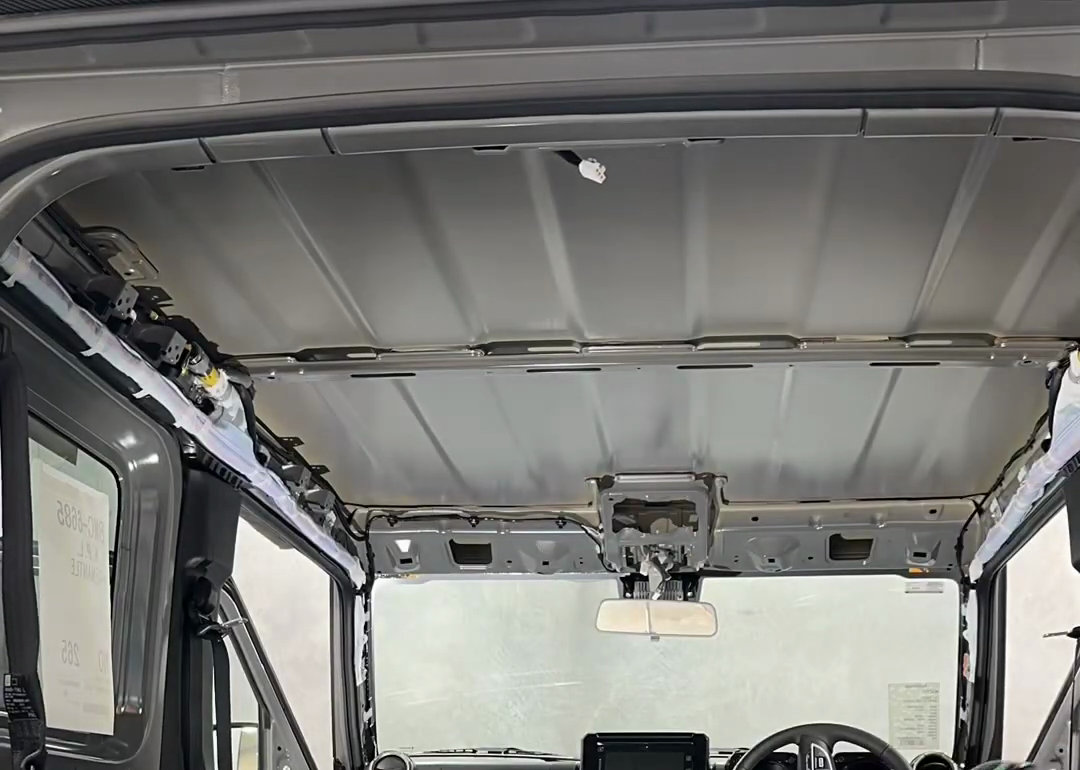
The best image that shows the view from the back of the deployment so you understand how the airbag comes out both along and down is from the TLR product page for their roof shelf.
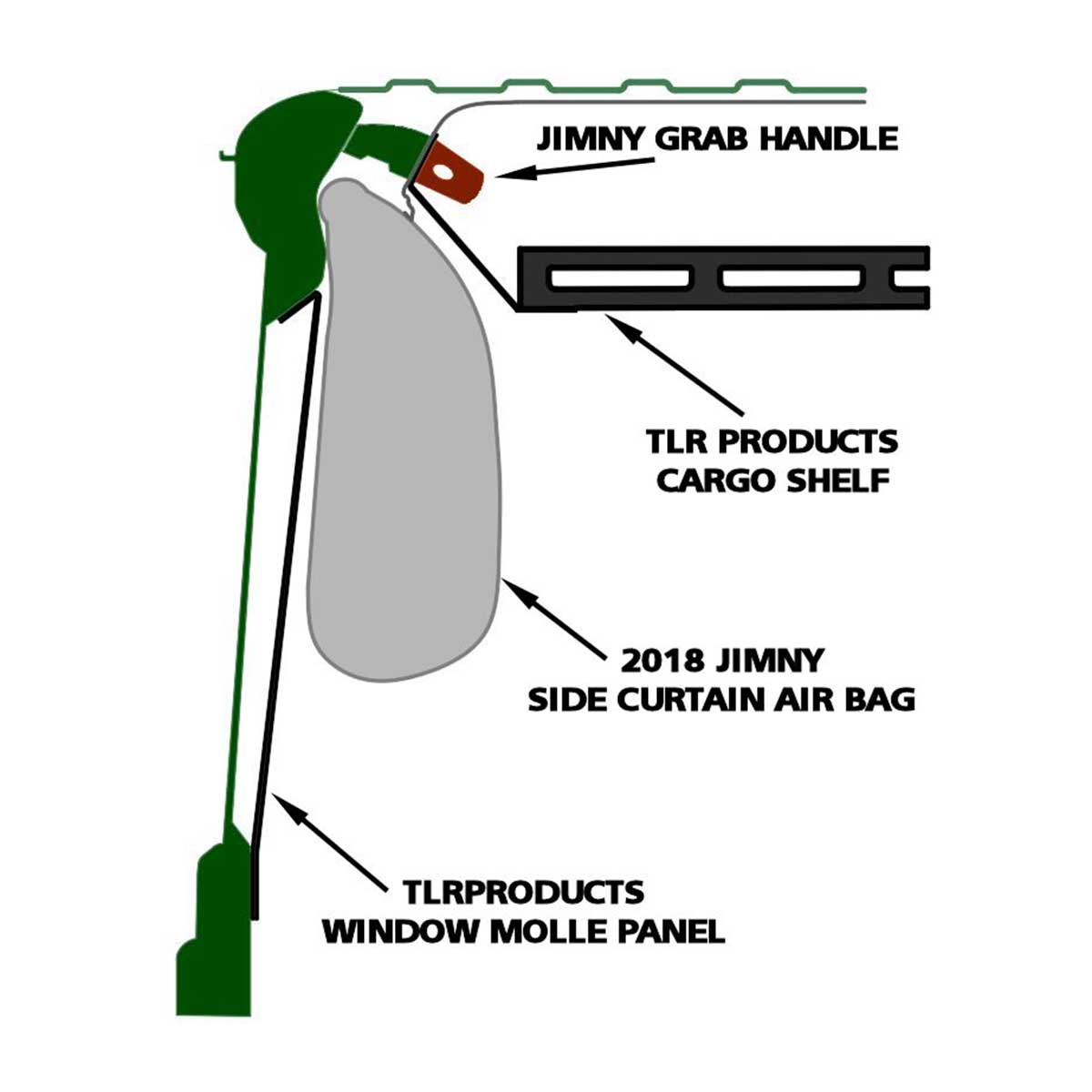
You also get a fair idea from the Euro NCAP video of the impact testing of the Jimny. Basically anything below the rear grab handle and is basically against the headlining to a 45º away from the headlining would stop the deployment happening.
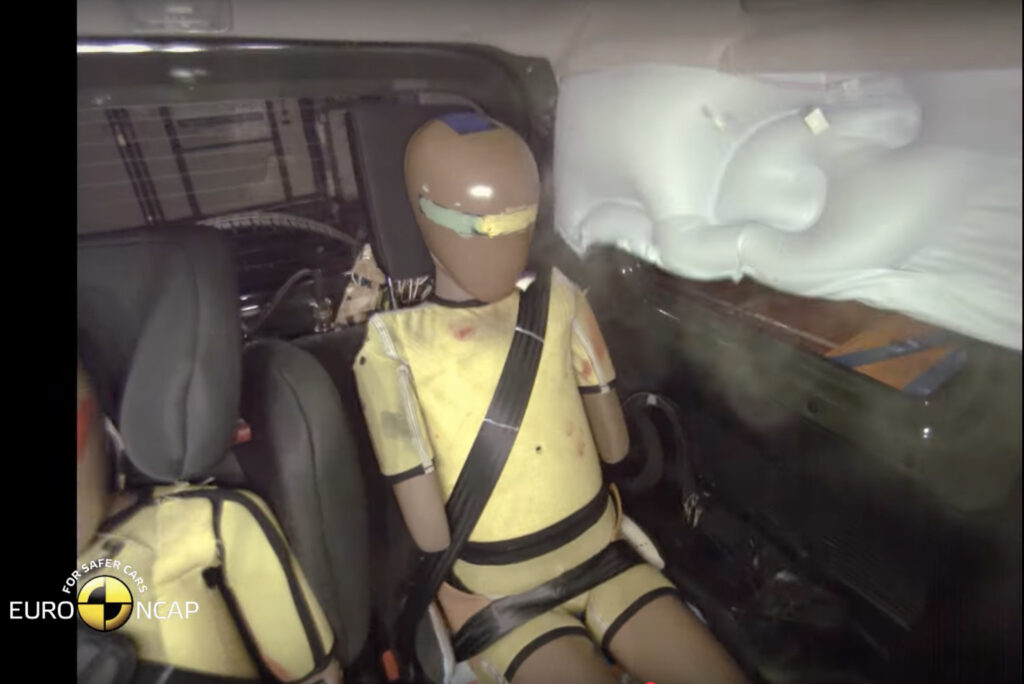
The biggest consideration with these airbags is ensuring their deployment is not slowed down by accessories you have mounted. Things like cargo barriers and even some roof shelves or storage near the headliner or a cupboard mounted to a gullwing window could stop the airbag deploying when you need it to.
Seatbelt pretensioner system
Of the entire SRS regime in the new Jimny, the pretensioners for the seatbelts are the most overlooked or forgotten about part. They aren’t necessarily complicated, but disconnecting them will cause you to have issues with airbag lights. This is often an issue when people remove rear seats for interior storage reasons.
This also happens to be something I have none of my own photos of, at least that I can easily lay my hands on, so here’s a couple of shots to look out for.
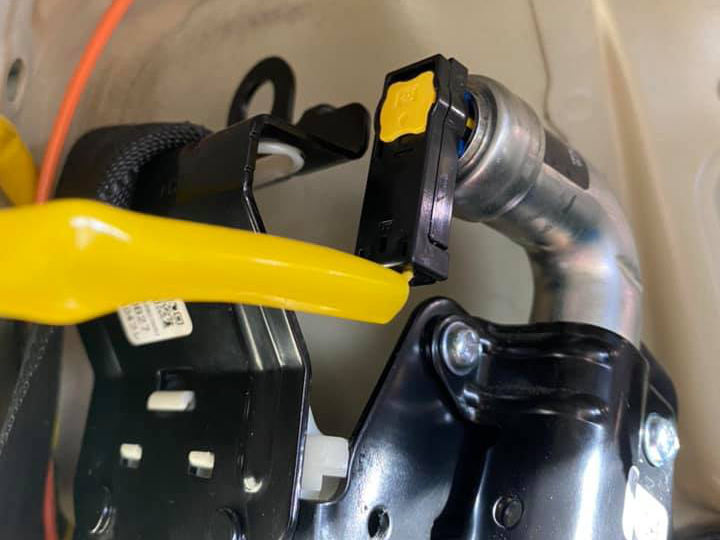
In fact, this is a good hint: any time you see a yellow connector and yellow sheath with the wiring, you’re probably dealing with something in the SRS for the vehicle and it’s worth being a bit careful and understanding what you’re doing!
Common questions
‘I want to get seat covers, what do I need to think about?’
You really need to think very hard about making sure they will not slow down the deployment of the seat airbag. A lot of things will say they have ‘airbag compatible’ or ‘airbag compliant’ seams, but generic seat covers often do not have the seam in the right location for the Jimny. This is especially true for seat covers more designed for bigger seats: they often end up quite baggy and much less likely to have the seam perfectly aligned.
Here’s an example from an ebay listing for a wreck. You can see how the generic seat covers have partially stopped the deployment of the seat airbag.
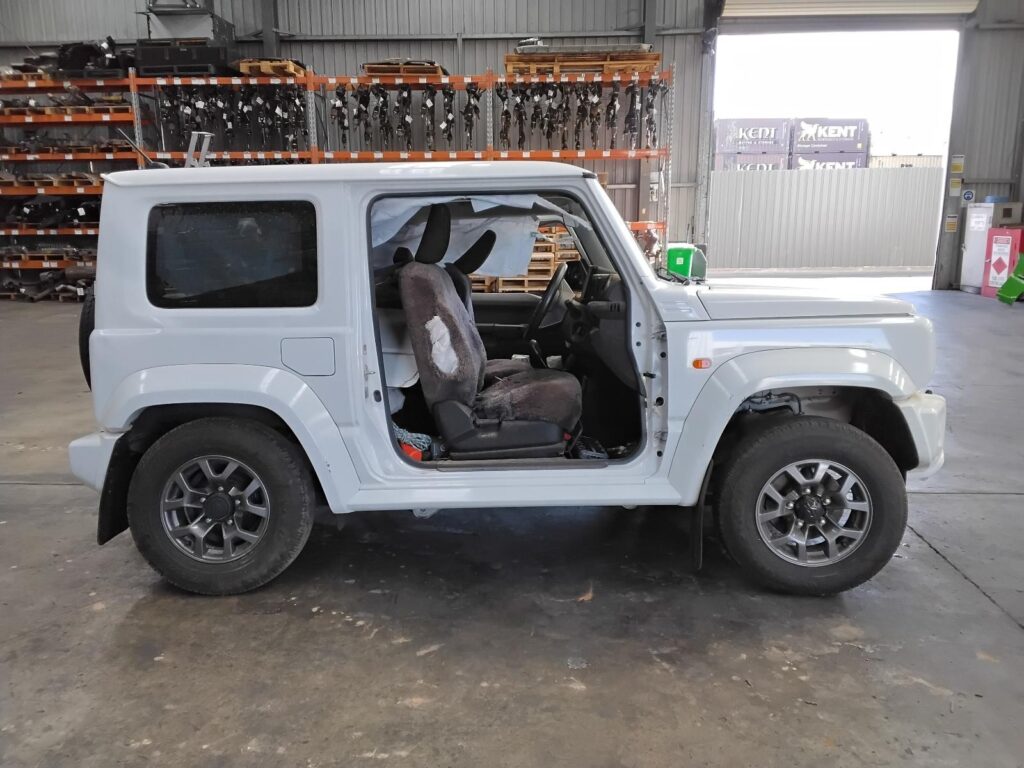
That can very easily be the difference between a significant injury and a bit of bruising in the case of a side impact. (In this case it was a side impact on the passengers side; the drivers side has deployed to cushion the driver from being accelerated hard into the door.
It’s worth paying the extra for really good brands for seat covers entirely to make sure you have a good airbag seam arrangement. The airbag inflating inside the seat cover is going to be an incredibly bad time on top of the bad time of having an accident in the first place. The couple of hundred dollars saved won’t make up for that bad time.
‘I want some roof height storage’
Make sure what you get is considerate of the curtain airbags and their deployments. If it goes past the deployment shown above then you’ll want to look at other options.
‘I want to fit a luggage divider’
Make sure it has provision for deploying the curtain airbags.
‘I’m removing my rear seats, what do I do about the seatbelts?’
Leave the seatbelt reels in place, just take the end of the seatbelt that goes down to the seat and tuck that behind the trim. If you fully want to remove them then I would be wrapping them up in something and tucking them securely behind the trim, but leaving the pretensioners plugged in. While there are electrical ways to fool the system into thinking the pretensioners are still there, it’s just safer to not risk the system not working when required due to an error you’ve introduced through the electrical side of things.
‘I’m fiddling with something related to the airbags, what should I think about first?’
Unplug the battery from the car for a little bit of time first. This isn’t hard, just disconnect the negative cable and wait a bit of time for all of the power to drain away in all the modules. A few minutes should do it, but waiting up to 30 minutes is advised depending on who you ask about it.
‘I’m installing a dash mat, do I have to worry about airbags?’
Yes, absolutely. They will need to have a flap to accommodate the passengers airbag. (Related: if your car has automatic on/off headlights and/or automatic climate control then you also need to make sure these sensors are not obscured by the dash mat). The genuine Suzuki dash mat is compatible with the airbags, so consider that as an option to make sure the airbag will definitely deploy and other systems will remain working correctly.
‘I want to install different seats’
If your car is one with seat airbags (and that’s all in Australia!) then you need an engineer to sign off on the new seats & swap in seats that also have airbags. In addition, the seatbelt alarm wiring is also needed to make sure that the car knows a seat is occupied – especially important for the passengers seat.
In Australia the engineering requirement plus aftermarket seats that contain compatible airbags might set you back many thousands of dollars, so you will have to consider this.
